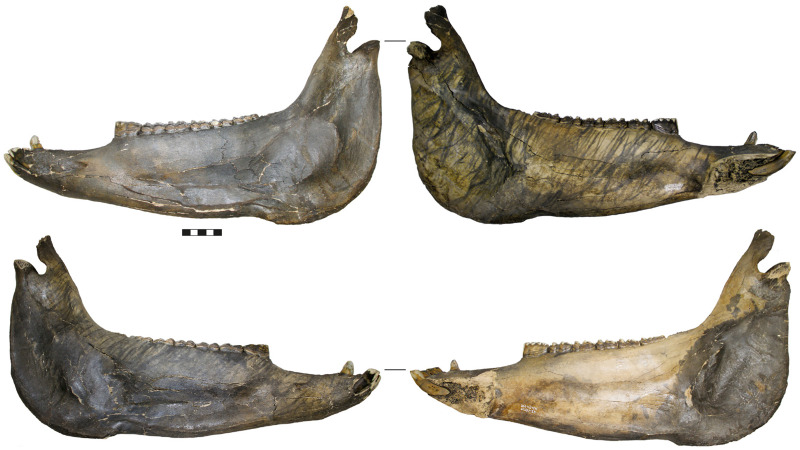
**A Fresh Perspective on Fossil Preservation in China’s Yixian Formation**
For many years, the remarkable fossil record of China’s Yixian Formation has been praised as a prehistoric “Pompeii,” where entire ecosystems were sealed off by devastating volcanic eruptions during the early Cretaceous period. Nevertheless, innovative new chemical studies are questioning this established narrative, indicating that the exceptional preservation of flora and fauna within this formation may have been influenced by more subtle, non-catastrophic processes.
### Reevaluating the “Chinese Pompeii”
Situated in northeast China, the Yixian Formation is a paleontological goldmine. Its fossils, dating back roughly 120–130 million years, encompass not only skeletons but also soft tissues, including feathers and skin, preserved in remarkable detail. These fossils have illuminated the evolution of birds, dinosaurs, and ancient ecosystems, rendering it one of the most significant fossil sites on the planet.
For an extended period, paleontologists assumed that the preservation quality in the Yixian Formation resulted from sudden, destructive volcanic eruptions that buried organisms in a manner akin to Pompeii. The layered ash deposits enveloping the fossils seemed to bolster this hypothesis. However, meticulous research utilizing advanced methods like uranium-lead dating of zircon crystals and mass spectrometry has begun to challenge this long-standing belief.
### The Rate of Accumulation
By employing uranium–lead dating, researchers scrutinized tiny zircon crystals within samples from the Yixian Formation. Zircons serve as essential chronological markers in geology because the uranium they house steadily decays into lead over time at a consistent rate. This method revealed that the fossil-rich rock layers formed over an astonishingly brief period of less than 93,000 years.
“That was somewhat of an eye-opener because it was much quicker than most previous studies had assumed,” states Dr. Paul Olsen, a paleontologist at Columbia University and a principal investigator in the research. In geological terms, this swift accumulation is merely a brief “eye blink,” but importantly, this discovery points to continuous, localized environmental conditions rather than catastrophic volcanic occurrences.
### Not the Volcanoes
While volcanic activities undeniably influenced the Yixian Formation, new findings imply it might not have played a direct role in the preservation of these ancient life forms. Analyzing zircon crystals from museum specimens uncovered varied age profiles: some zircons indicated volcanic sources, while others originated from sedimentary deposits weathered from surrounding areas.
“If these fossils were indeed preserved in volcanic ash flows,” remarks Dr. Scott MacLennan, a geoscientist at the University of the Witwatersrand, “then we would anticipate all the zircon to essentially share the same age. What we uncovered was quite different.”
The preservation process appears to have unfolded in more stable, sedimentary settings, rather than amidst chaotic volcanic disasters. This conclusion is further reinforced by the postures of the fossilized creatures, which indicate peaceful demises. “When animals meet their end through volcanic mudflows, they often adopt ‘pugilistic positions,'” Olsen clarifies, referring to the telltale clenched fists and contorted bodies typical of victims of abrupt thermal shocks. In contrast, numerous Yixian animals seem to have perished while at rest or in sleep.
### Serene Lakes and Collapsed Burrows
Olsen and his team suggest that two primary mechanisms contributed to the extraordinary preservation evident in the Yixian Formation: deep, oxygen-depleted lakebeds and collapsed burrows.
Flattened fossils, showcasing intricate details of soft tissue, are typical of anoxic lake environments. In these lakes, the lack of oxygen at the bottom thwarted scavengers and microbes from disrupting the remains of animals that settled below. As Jordan Mallon, a palaeobiologist at the Canadian Museum of Nature, comments, “The fossil preservation there is remarkable … You encounter flattened fossils that capture the finest details of the original soft tissue anatomy, including feathers.”
Conversely, the outstanding three-dimensional fossils found in the Yixian Formation likely survived due to burrow systems. When an animal dug into the earth, its tunnel could collapse, entombing the body while keeping its flesh intact. Various triggers like predatory encounters, earthquakes, or heavy rainfall could have instigated such collapses. “The burrow effectively acted like a sieve,” Olsen describes. “It blocked coarse material, permitting fine sediment to gently cover the organism.”
### A More Ordinary, Yet Fascinating, Revelation
In contrast to the dramatic imagery of a prehistoric Pompeii, the updated understanding of the Yixian Formation presents a quieter, more ordinary series of events. Instead of an abrupt disaster, the fossils owe their preservation to gentle, ongoing environmental elements.
While the absence of a grand volcanic tale might seem underwhelming, Dr. MacLennan views this revelation as cause for optimism.